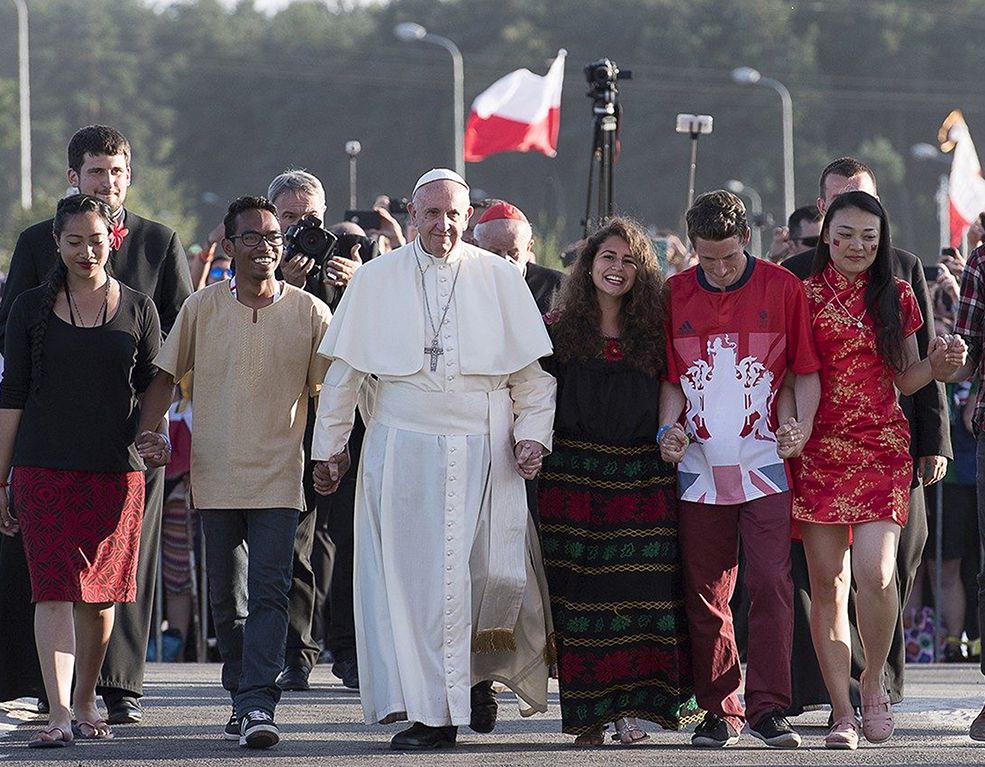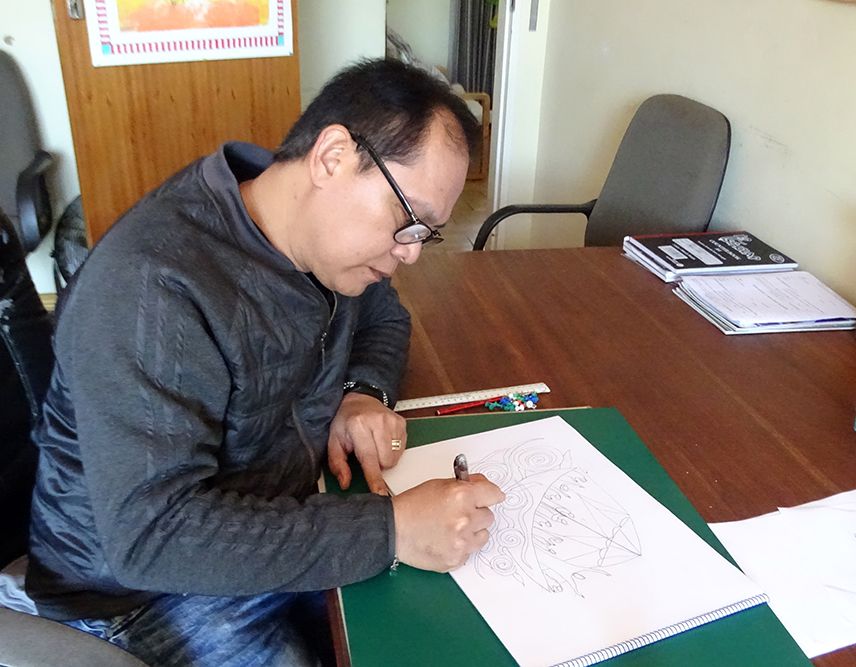The Mary Mediatrix Hermitage in the landlocked province of North Cotabato sets an example on how to preserve nature, and properly and productively make use of it. The community opens its gate to the public not only for practicing faith, but also to let them witness how they as hermits protect nature and make it produce human needs. They also want people to see that tilling a land can be sustainable and self-sufficient with hard work, discipline, wisdom, technical know-how, and tested and proven practices.
“The way the hermitage environment was designed reflects our advocacy for nature,” said Fr. Eugene Vincent De Jesus, Our Lady’s Hermitines (OLH) founding and leading community member. “We integrate awareness on how to care for earth in every activity we do here.”
The community cultivates a food forest (an agroforestry system that mimics the structure and function of a natural forest but is designed to produce food, fuel, fiber, and other products) and practices permaculture (the growth of agricultural ecosystems in a self-sufficient and sustainable way) in its preservation and enrichment.
Fruits and vegetables are grown by the hermits. Animals are raised in six and a half hectares of rolling land, which they have turned into a food forest over the past years. Following the food forest concept and observing permaculture principles, they grow canopy, understory, shrub, herbaceous, rhizosphere, groundcover, and climber plants. They grow durians, coconuts, forest bananas, and mangosteens. Señorita bananas have also been planted recently, creating multi-diversity in the farming of the land.
North Cotabato-strategically located in central Mindanao-is regarded as the fruit basket of the country’s second-largest island. It also borders Mt. Apo, the country’s most prominent peak, with an elevation of 2,954 meters above sea level.
The religious men raise cows, sheep, chickens, geese, hogs, and turkeys. They also raise dogs and cats as pets. The foods that they produce are chiefly for their consumption. But their produce is more than enough for the needs of four men with a lifestyle of simplicity and sobriety toward material things.
“We plant and raise animals for our food,” Fr. De Jesus said. “If we produce more than we need, we share them with whoever needs them. For those who are financially capable, they pay us for what we share in return. Our livelihood is not primarily for profit but for the sustainability of the community.”
People and friends make donations for further vegetation of the community’s land. Just recently, an individual sponsored the planting of pine and cypress trees-an act that serves as a testament to the community’s fruitful advocacy for the environment.
The community advocates the integrity of creation and promotes the Laudato Si, De Jesus said. A variety of tree seedlings are planted in open spaces of the six hectares of land. Over the past years, hundreds of people have joined the hermits to make the place greener by planting seedlings of an array of trees.
The structures built by the hermits are literally in the middle of a forest, which they refer to as a food forest-a source of life and protection for human life. But the hermits also see the destruction of the environment by man himself. They view man’s self-centeredness and tight attachment to materialism as tremendous threats to nature. To save nature from potential environmental disasters, man has to be reminded of his responsibility and capability to protect it for the present and future generations.
CONSUMERISM POSES DANGERS
“The mindset of people who are still very anthropocentric and the prevailing culture of consumerism pose dangers to nature,” he said. “We counter these two threats with the lifestyle we live, espouse, and witness inside the hermitage.”
Mt. Apo, a protected area, has rich mine reserves. The indigenous people of Manobo, living at the foot of the mountain, turned down mining proposals because they believed it would trigger the destruction of their environment. Other tribes at the mountain’s foot include the Obo, Tagabawa, Matigsalog, Ata, Tinananen, Kagan, Arumanen, Kulamen, and Tagakaulo.
North Cotabato is one of the provinces prone to flooding. In July 2023, North Cotabato was hit by a flash flood and landslides, displacing more than 1,000 families and claiming the lives of two. The hermitage food forest helps prevent flood and soil erosion. Their advocacy to inspire reforestation will further help protect the ecosystem.
SILENCE AND SOLITUDE
The hermitage was founded in Davao on the occasion of World Environment Day in June 2010. The Mary Mediatrix Hermitage in Kidapawan was built on the Feast of the Annunciation on March 25, 2021.
The community members observe silence and solitude. Each has his hut for solitude, prayer, and other private activities. “Being hermits, we have a regular designated time for prayer and work daily based on our horarium,” he said.
As hermits who value silence and solitude with a profound meaning, they also offer time for people who wish to see and talk with them in person. “Being with people has a specific purpose and time, too,” De Jesus said. “We always value our time for silence and prayer, but it does not mean that people are secondary only nor unimportant to us. Of course, above our horarium, we also are open when God’s calendar has to summon our attention.”
Observing silence and solitude separately, the hermits have particular times to see each other. “We only gather together during the celebration of the Eucharist and some special occasions,” he said. The mission of the hermits, De Jesus explained, is five-fold: I ECHO, which stands for Intercessory Prayer, Earth Care, Companioning Searchers/Pilgrims, Hospitable Caring, and Ora et Labora (Prayer and Work).
De Jesus was alone at the beginning. He described the idea of hermitage as an offshoot of a call within a call. “But God started to provide kindred souls,” he said. “Some had come and left. Others came and stayed.”
TWO CHAPELS
On January 9 this year, Fr. De Jesus shared with the public on their social media account the news that three individuals would join their community, expanding the hermitage to seven members.
The community built two chapels. The St. Joseph chapel, which can accommodate 150 people, is open for everyone any time of the day. The Chapel of Yeshua-Perpetual Adoration Chapel is limited to the use of the hermits only but is open to people on special occasions and can hold 200 individuals.
During the recent Christmas season, people followed the trail to the hermitage to attend Simbang Gabi. Individuals and families sponsored and served hot lugaw to the mass attendees. Priests from outside the community celebrated Simbang Gabi masses.
Hundreds of people from different parts of the country have visited the place since its establishment in 2021. It also draws the curiosity and interest of young people,
Fr. De Jesus said. Just recently, some seminarians and altar servers from Sto. Niño de Cebu parish came to experience the feel of the place and encounter God through silence and prayer.
The hermits also collaborate with local government units in their desire to help people promote their lives. They particularly seek the improvement of people’s socio-spiritual well-being. Retreats are welcome in the community. It also offers to facilitate these events. A retreat house was built for these occasions.
Opening the community to people is part of the five-fold mission of the hermits, which are companioning pilgrims and searchers, and hospitable caring. The hermitage is within the sphere of the Kidapawan diocese. It carries on with its advocacy for safeguarding nature and inspiring people to work for the same end.
AMPLIFYING SILENT VOICES
Detached from the outside world, these hermits utilize the social media to keep themselves still connected by sharing their faith and advocacies. They use it to keep an eye on the events that are taking place in society, spread their faith and advocacies, and share their views on issues affecting the people.
These hermits may be remote from society but are deeply concerned about its welfare. Fr. De Jesus engages in nation-building and good governance by sharing his opinions on issues that his digital footprints can tell. He breaks his silence as a hermit when he sees the good of the people is at stake.
His voice on social media reaches places and more people than the number of visitors they receive and converse with in person at the hermitage.
Fr. De Jesus also uses social media to express their gratitude to people who support the community. He also publishes updates on community improvements sponsored by individuals, families, and groups.
































